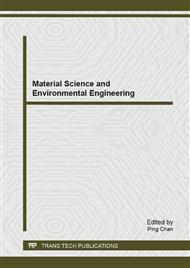p.607
p.614
p.620
p.624
p.632
p.639
p.646
p.652
p.659
The Study of Groundwater Modeling of Plain Area in Shiyang River Basin - I Groundwater System Conceptual Model Construction
Abstract:
In order to construct the groundwater numerical simulation model, the study area was determined on the basis of the geological and hydrogeological conditions. Taking Feflow as operating platform, combining GIS with Surfer software, a study area of the structure of three-dimensional aquifer model was established, realizing the 3D visualization of a large area of the complex geological content. Combined with the hydrogeological conditions, three-dimensional geological structure of the model further generalization. The result showed that the aquifer of the vertical was generalized into the unconfined aquifer; based on the characteristics of lithology, structure, parameters and distribution of recharge and discharge in groundwater system, the study area groundwater system was characterized by isotropic saturated-unsaturated numerical flow model, and the equilibrium composition of the elements was analysed in study area, the partition of the aquifer hydrogeological parameters was divided, lay the foundation for groundwater numerical model simulation.
Info:
Periodical:
Pages:
632-638
Citation:
Online since:
May 2014
Authors:
Price:
Сopyright:
© 2014 Trans Tech Publications Ltd. All Rights Reserved
Share:
Citation:


